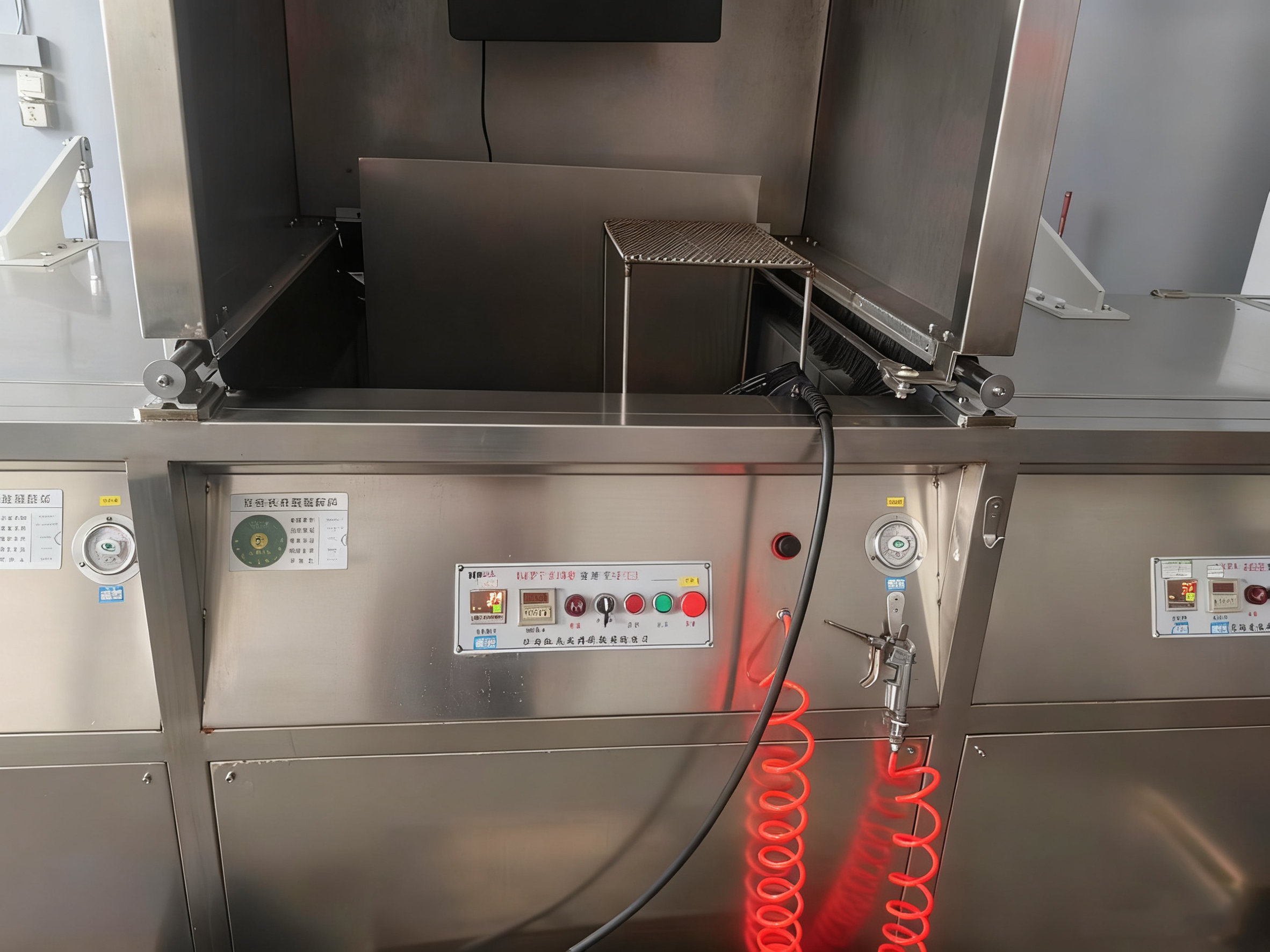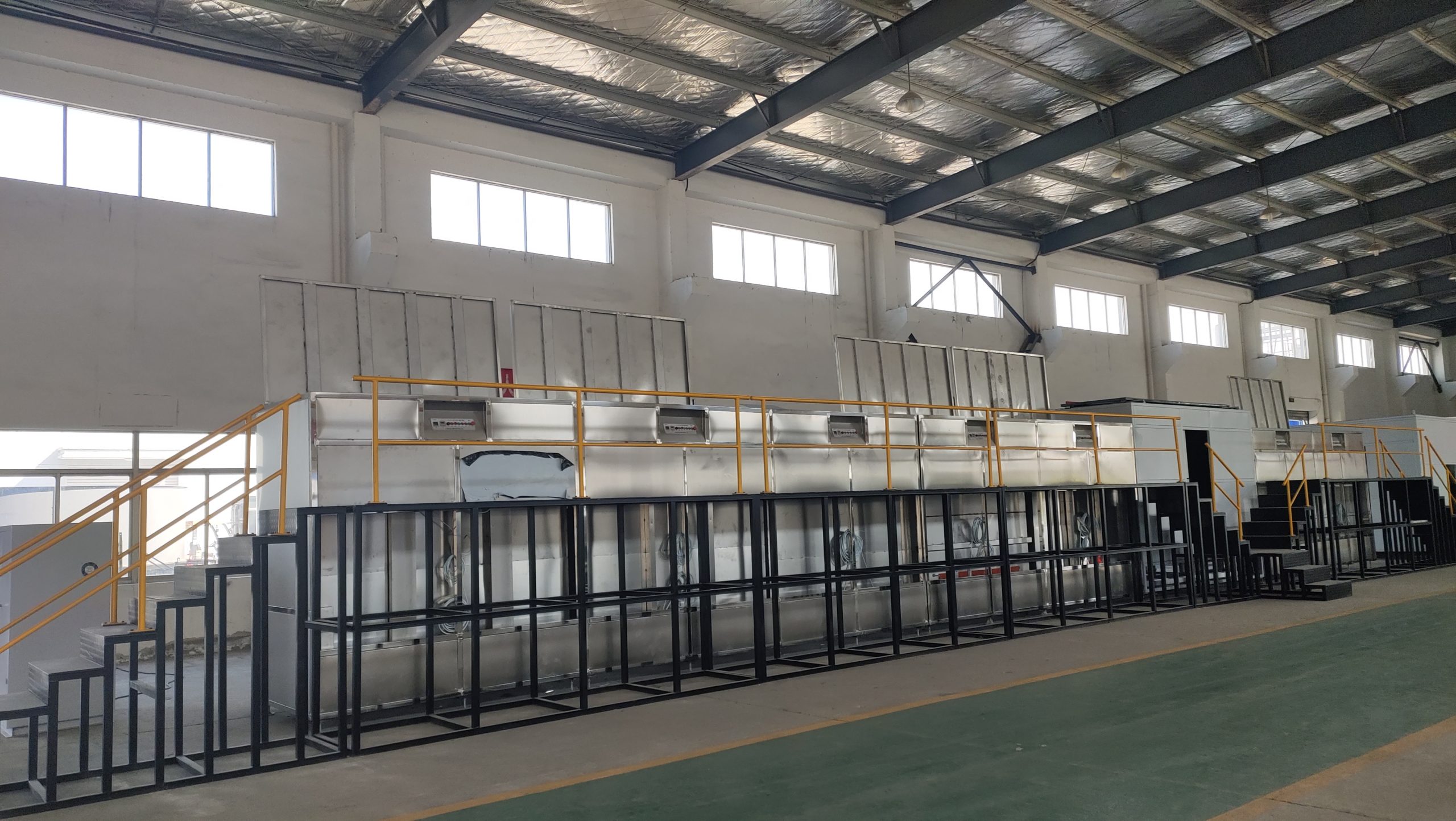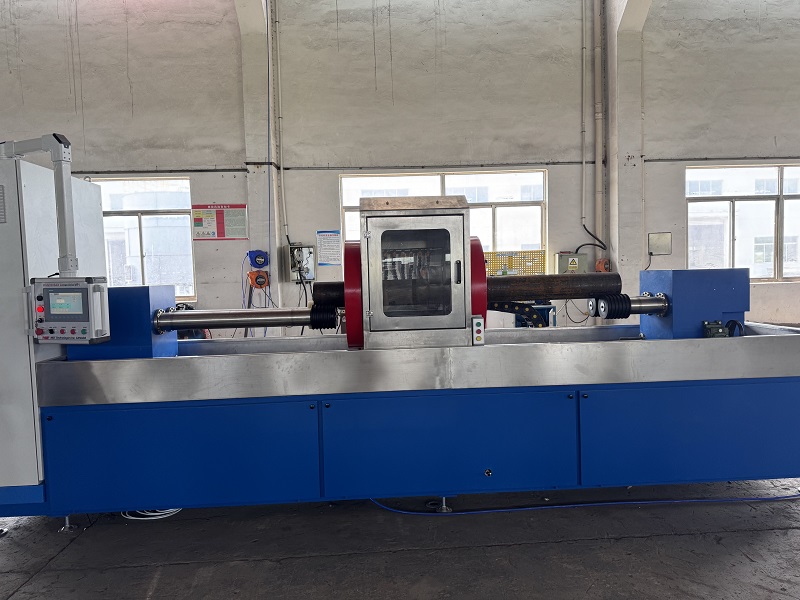In modern industrial manufacturing, non-destructive testing (NDT) technologies play a critical role. Among them, fluorescent penetrant inspection (FPI) is a highly effective method for detecting surface defects, widely used in industries such as aerospace, automotive, and machinery. The electrostatic spraying fluorescent penetrant inspection line represents an automated advancement of this technology, significantly improving detection efficiency and precision. This article provides an in-depth look at its principles, equipment components, advantages, and applications, optimized for SEO to help you understand this professional solution. If you’re seeking an efficient NDT solution, the electrostatic spraying fluorescent penetrant inspection line may be your ideal choice.
What is an Electrostatic Spraying Fluorescent Penetrant Inspection Line?
Fluorescent Penetrant Inspection (FPI) is a non-destructive testing method that involves applying a fluorescent penetrant to a workpiece surface. The penetrant seeps into surface-breaking defects (such as cracks or pores) via capillary action. Excess penetrant is then removed, and under ultraviolet (UV) light, defects are revealed through fluorescent indications.[^13] The electrostatic spraying fluorescent penetrant inspection line integrates electrostatic spraying technology into this process, creating an automated production line primarily used for high-volume surface defect detection of small to medium-sized parts.
Unlike traditional dip or spray penetrant lines, the electrostatic spraying method applies penetrant via an electrostatic field, ensuring uniform coverage, especially on complex-shaped parts.[^10] These systems are available in fully or semi-automatic configurations, with fully automated lines using PLC control to manage workpiece transport and processing across various stations.
How Does an Electrostatic Spraying Fluorescent Penetrant Inspection Line Work?
The operation of an electrostatic spraying fluorescent penetrant inspection line combines electrostatic adsorption with fluorescent penetrant principles:
- Penetration Stage: Workpieces enter the penetration station, where penetrant is atomized and sprayed via electrostatic equipment. The electrostatic field ensures charged penetrant particles adhere uniformly to the workpiece surface, infiltrating defects.[^11]
- Drip and Cleaning: After penetration, workpieces move to a drip station to remove excess penetrant, followed by pre-rinsing, emulsification (for post-emulsifiable penetrants), and final rinsing to ensure a clean surface while retaining penetrant in defects.
- Drying and Developing: The drying station removes moisture, followed by the application of a developer. Under UV light (blacklight), defects become visible as fluorescent indications.
- Inspection and Unloading: At the inspection station, defects are examined manually or automatically in a darkroom, and workpieces are unloaded upon completion.
The process supports post-emulsifiable penetrant methods, including dry powder, water-based wet, or non-aqueous wet developers, to meet varying sensitivity requirements.[^13] Electrostatic spraying minimizes penetrant waste and enhances coating uniformity.
Equipment Components and Process Flow
A typical electrostatic spraying fluorescent penetrant inspection line consists of multiple stations, including:
- Loading Station: Workpieces are hung or placed onto a conveyor system.
- Penetration Station: Electrostatic spraying of penetrant.
- Drip Station: Removal of excess penetrant.
- Cleaning Station: Pre-rinsing, emulsification, and final rinsing.
- Drying Station: Hot air or infrared drying.
- Developing Station: Application of developer.
- Inspection Station: Darkroom with UV lights.
- Unloading Station: Completion of the process.
Conveyor systems vary, including overhead chains, roller conveyors, or single-arm hoists.[^12] Equipment covers may feature upward-curved or side-sliding designs for easy maintenance. Supporting tools like blacklight radiometers and fluorescence brightness meters ensure detection accuracy.
Typical process flow example:
- Pre-Cleaning: Ultrasonic cleaning → Spray cleaning → Hot immersion → Drying.
- Post-Cleaning: Fluorescent penetration → Spray rinsing → Emulsification → Final rinsing → Drying → Developing → Darkroom inspection.[^12]
Advantages of Electrostatic Spraying Fluorescent Penetrant Inspection Lines
Compared to other penetrant inspection systems, electrostatic spraying lines offer distinct advantages:
- High Automation: Fully automated systems reduce manual intervention, with PLC and HMI systems monitoring all stations.[^13]
- High Efficiency: Capable of inspecting up to 40,000 parts per day, ideal for high-volume production.
- Low Labor Intensity: Automated conveyors minimize operator workload.
- Material Savings: Electrostatic spraying reduces penetrant consumption compared to dip methods, lowering costs.
- Versatility: Suitable for various part shapes, including complex geometries.
- Eco-Friendly: While wastewater is generated, treatment systems can mitigate environmental impact.[^10]
Drawbacks include high initial investment and larger footprint, but for high-throughput industries, the benefits outweigh these limitations.
Applications and Case Studies
Electrostatic spraying fluorescent penetrant inspection lines are widely used in industries requiring high-precision surface defect detection:
- Aerospace: Inspection of engine blades, turbine disks, and other critical components for cracks.[^11]
- Automotive: High-volume inspection of standard parts like bolts and gears.
- Railway and Machinery: Surface defect checks for rail components and bearings.
- Nuclear and Defense: Inspection of high-safety parts.
- Others: Non-destructive testing of powder metallurgy, ceramics, and plastics.
For example, in aerospace, post-emulsifiable electrostatic spraying lines are used for large parts, offering higher sensitivity for detecting complex defects like stress corrosion cracks.[^13] Companies like China Aero Engine Corporation have adopted such systems to enhance product quality.
Conclusion: Considerations for Choosing an Electrostatic Spraying Fluorescent Penetrant Inspection Line
The electrostatic spraying fluorescent penetrant inspection line is an advanced tool for industrial NDT, offering unmatched efficiency and reliability. When selecting a system, consider workpiece shape, size, facility layout, and inspection standards.[^13] For businesses involved in high-volume part production, consulting a professional supplier for a customized solution is recommended. We hope this article provides valuable insights into fluorescent penetrant inspection technology. Feel free to leave comments to discuss more technical details!
Contact us for more solutions.
[^10]: Source: Industry technical documentation on electrostatic spraying in NDT.
[^11]: Source: Aerospace NDT standards and applications.
[^12]: Source: Equipment specifications for automated FPI lines.
[^13]: Source: Technical overview of fluorescent penetrant inspection processes.










